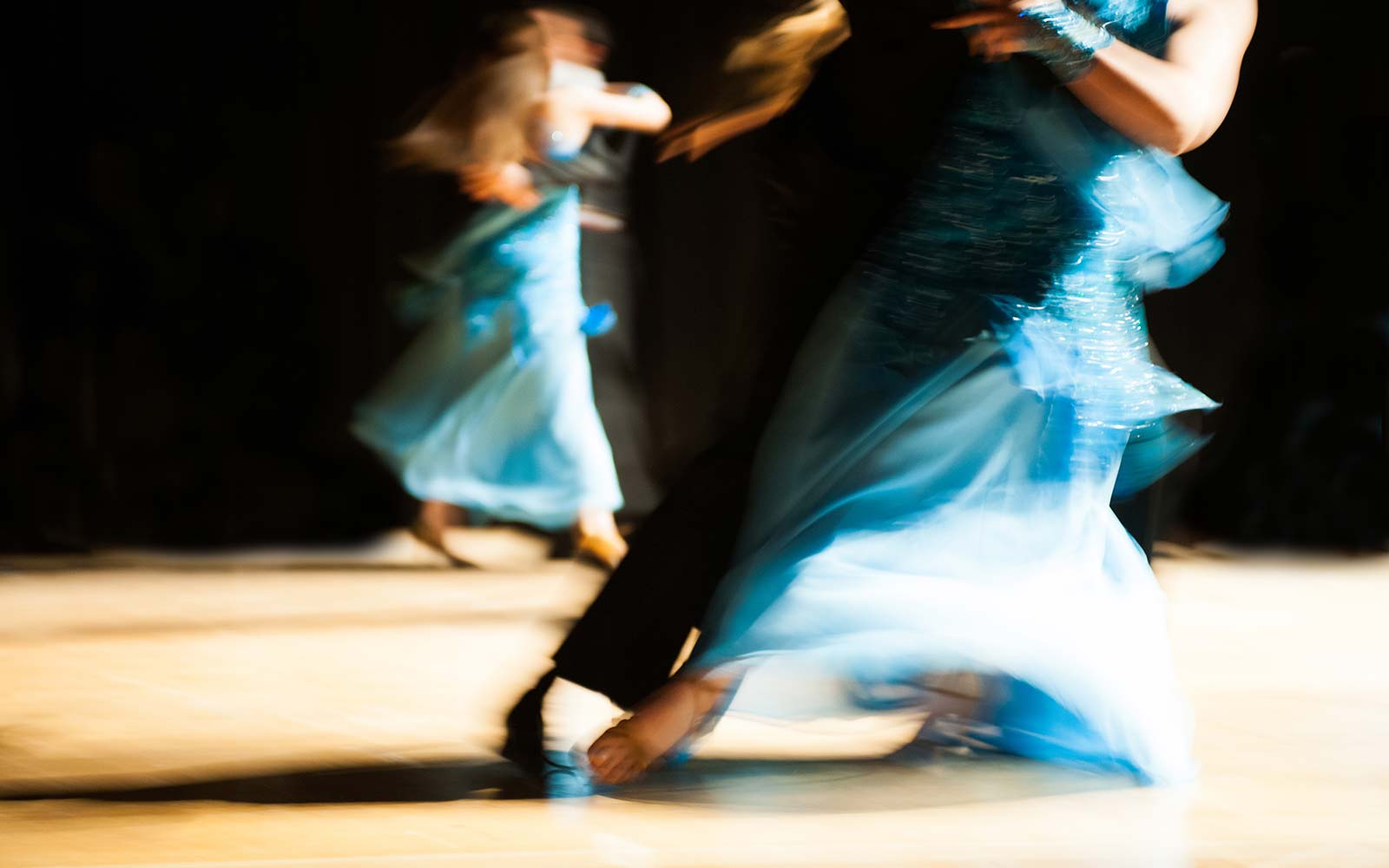One of the most common questions that comes up in discussions about dance is whether it is an art or a sport. I don’t object to the term “DanceSport” as many of my fellow professionals do, but I understand their reluctance to embrace this terminology when it comes to referencing this beloved athletic art form.
Of course, most dancers recognize that dance is more art than sport. On the other hand, we also know that it takes a considerable level of athletic ability to dance well. But where is the distinction, and what does it mean? Let’s explore how dance has evolved to better understand the reason this is such a common and controversial subject these days.
Originally, ballroom dancing was seen purely as an art form. Like all dancing, there was never even a thought that it was a sport.
In the early 1980’s, the International DanceSport Federation (IDSF, now WDSF) wanted to shake up ballroom dancing so that it had greater public appeal. They looked at studies about the athletic requirements on the human body during championship-level dance events.
One such study by a German university showed that during the 90 seconds of a Jive or Quickstep, high level competitors experienced the same aerobic exertion on their bodies as athletes running the 800-meter race. Lactic acid buildup, heart rate, respiration, blood oxygen levels and other physical attributes were affected in the same way among high level dancers as high level athletes in sports. This became a major point in the argument that DanceSport belonged in the Olympics.
Olympic innocence
Even as recently as the early 1980s, the Olympic Games were still pretty innocent. We had not yet experienced the ugliness of widespread doping issues. Only amateurs were allowed to compete and this was strictly enforced. While there were political controversies even then, people around the world looked upon the Olympics as a pure competition of the best the world had to offer. It was a celebration of quality of human capability.
The IDSF believed that if ballroom dancing was included in the Olympics, it would become more widely accepted and represented. Plus, there was the benefit of receiving government funding, a major incentive. So the organization became single-minded in its focus on this objective.
Defining Sport
The Olympic Games are about sport. And sport is about calculated results. In general, people are leery of subjective results in any sport activity. We are much more comfortable when the winner is based on who crossed the line first rather than what obscure details of form they may have been showing in comparison to others. Even in skating, the judging is becoming more measurable to avoid the appearance of bias. Art should be flawless and look good, but sport should be about athleticism, with no subjective measurement.
In a running race, nobody scores points for style. It’s whoever crosses the finish line first, even if the form is hideous. Any “sport” that requires subjective grading really shouldn’t be part of the Olympic Games. That includes figure skating. Skating has lost so much since it was adopted in the Olympics. It is less creative, less interesting and has deteriorated visually to being mostly about who can stay upright the longest.
According to the rules for figure skating, an athlete must display flow, finesse, and an “effortless movement in time to the music.” She has to skate with style and clarity, “according to the principles of proportion, unity, space, pattern structure, and phrasing.” In other words, she can’t just jump and spin — she has to dance.
As one journalist observed, “A dancer sweeps you away with her grace and flow and hides her sweat with flourish. A world-class figure skater, on the other hand, pulls you into her own anxiety. She performs just barely above the limits of her skill, trying jumps you both know she can’t always land.” The result is something in which the greatest thrill is not the beauty of what they are creating, but wondering how dramatic the next fall is going to be.
The question nobody is asking
Let’s be real and look at the elephant in the room. Has figure skating — or any form of ice skating for that matter — gained public recognition and involvement as a result of being in the Olympics. Has it? Are more people going out to enjoy social skating? Is more ice time available for skating activities (not including hockey)? I haven’t seen it.
Yes, skating competition can be found on television but aside from that there has been no improvement in public acceptance of skating. It could even be argued that fewer people are skating now than before ice skating became an Olympic sport!
If that’s the case, why are we expecting ballroom dancing to be any different?
Where we are today
During the last round of IOC decisions about including new sports, ballroom dancing was the first category eliminated from consideration. But the Olympic Committee did include Break Dancing. The WDSF immediately jumped onto Break Dancing, a discipline they had never been involved in and knew nothing about, and began to govern break dancing competition. It was sad to see a move like this purely for political gain, and upsetting to the break dancing community to have a bunch of what they called “old white men” getting mixed up in their dance form and putting barriers into a discipline that was all about diversity and youthful creativity. Time will tell if break dancing becomes more popular or loses ground now that it’s in the Olympics.
In fairness, the WDSF and its emphasis on sport has allowed some aspects of ballroom dancing to become more dynamic. There is more understanding of 3D space and shaping. There is more volume. There is more creativity in some aspects of choreography. Unfortunately, not all of these things have been for the good, as some shaping and choreography has gone too far. A great deal has been lost through this excessive focus on sport. It is hard to watch WDSF events these days, especially in the Standard genre. The Viennese Waltz is unrecognizable. The Slow Foxtrot looks like Quickstep. Waltz is filled with syncopation and body flight, the beautiful slow rise and fall flow lost to history. Watch a WDSF Samba with the music off and you’ll wonder what dance that is, as few of the step patterns seem to have any relationship to Samba. The Rumba is just one posed line after another with no Rumba Walks in sight.
There may be some good news. I’ve been seeing signs that a more balanced approach may be coming. The latest Russian amateur competitions actually had surprisingly artistic choreography and higher quality basics than we’ve seen in years. We’ve even seen competitions that required championship couples to dance only basic figures. In Latin events, couples were even looking at each other, a refreshing change!
Ballroom dancing is and should be athletic. But we should not be pushing athleticism ahead of art. We can create public acceptance and involvement without making it a sport. Pierre Dulaine did not push sport in the NYC schools dance program he created that was featured in “Mad Hot Ballroom” and dramatized in “Take the Lead.” There is lots of appeal if you just present it properly!














